Feifei Shi
Task Offloading for Smart Glasses in Healthcare: Enhancing Detection of Elevated Body Temperature
Aug 14, 2023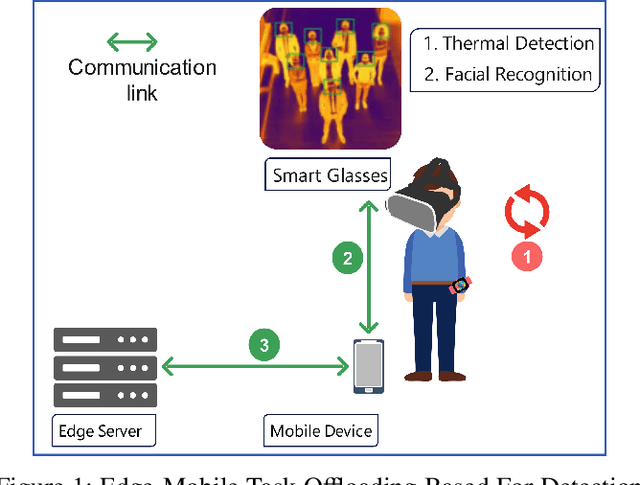
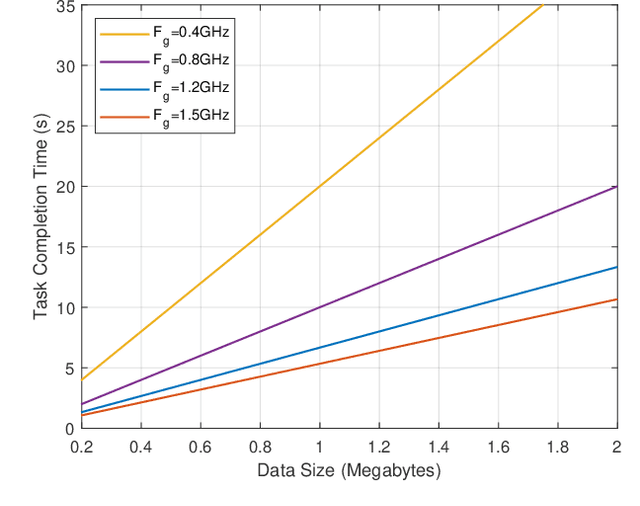
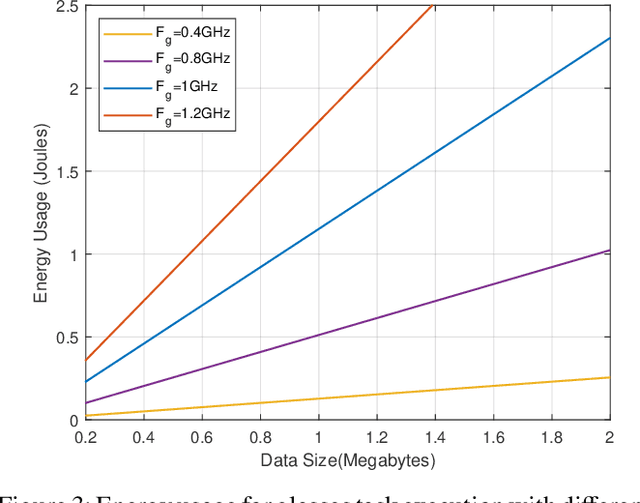
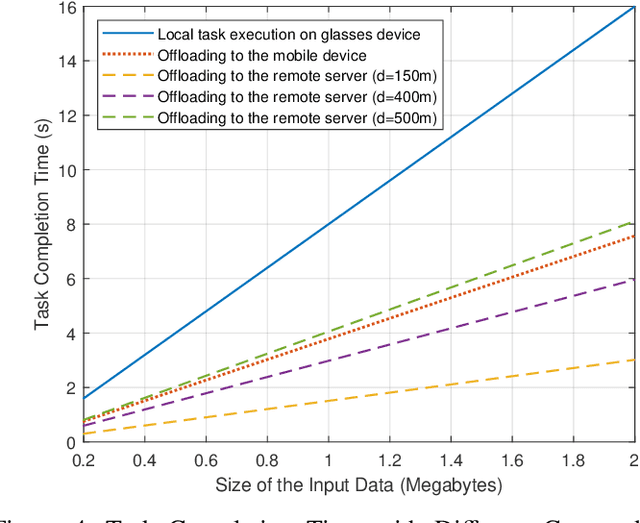
Abstract:Wearable devices like smart glasses have gained popularity across various applications. However, their limited computational capabilities pose challenges for tasks that require extensive processing, such as image and video processing, leading to drained device batteries. To address this, offloading such tasks to nearby powerful remote devices, such as mobile devices or remote servers, has emerged as a promising solution. This paper focuses on analyzing task-offloading scenarios for a healthcare monitoring application performed on smart wearable glasses, aiming to identify the optimal conditions for offloading. The study evaluates performance metrics including task completion time, computing capabilities, and energy consumption under realistic conditions. A specific use case is explored within an indoor area like an airport, where security agents wearing smart glasses to detect elevated body temperature in individuals, potentially indicating COVID-19. The findings highlight the potential benefits of task offloading for wearable devices in healthcare settings, demonstrating its practicality and relevance.
A Survey of Hybrid Human-Artificial Intelligence for Social Computing
Mar 17, 2021
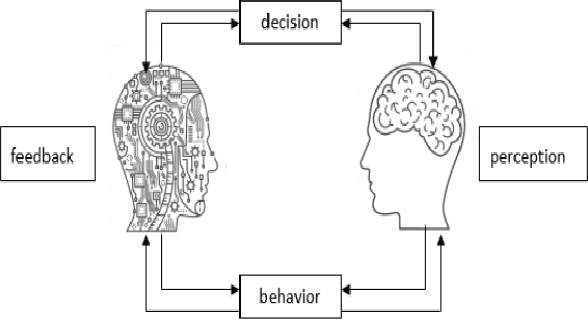


Abstract:Along with the development of modern computing technology and social sciences, both theoretical research and practical applications of social computing have been continuously extended. In particular with the boom of artificial intelligence (AI), social computing is significantly influenced by AI. However, the conventional technologies of AI have drawbacks in dealing with more complicated and dynamic problems. Such deficiency can be rectified by hybrid human-artificial intelligence (H-AI) which integrates both human intelligence and AI into one unity, forming a new enhanced intelligence. H-AI in dealing with social problems shows the advantages that AI can not surpass. This paper firstly introduces the concept of H-AI. AI is the intelligence in the transition stage of H-AI, so the latest research progresses of AI in social computing are reviewed. Secondly, it summarizes typical challenges faced by AI in social computing, and makes it possible to introduce H-AI to solve these challenges. Finally, the paper proposes a holistic framework of social computing combining with H-AI, which consists of four layers: object layer, base layer, analysis layer, and application layer. It represents H-AI has significant advantages over AI in solving social problems.
Could robots be regarded as humans in future?
Dec 01, 2020
Abstract:With the overwhelming advances in Artificial Intelligence (AI), brain science and neuroscience, robots are developing towards a direction of much more human-like and human-friendly. We can't help but wonder whether robots could be regarded as humans in future? In this article, we propose a novel perspective to analyze the essential difference between humans and robots, that is based on their respective living spaces, particularly the independent and intrinsic thinking space. We finally come to the conclusion that, only when robots own the independent and intrinsic thinking space as humans, could they have the prerequisites to be regarded as humans.
 Add to Chrome
Add to Chrome Add to Firefox
Add to Firefox Add to Edge
Add to Edge